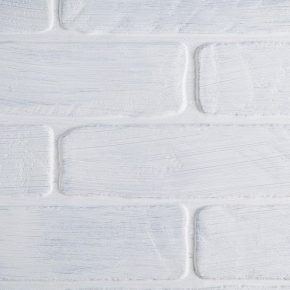
GUEST ARTICLE: Residents admit to papering over problem areas to keep damp at bay
New research released by property preservation specialists Peter Cox has found only 21% of the population know how damp issues are caused in their home*, while less than a third (31%) know how to address a damp-related problem. This guest article explores this more…
The firm is warning residents to check their properties for any issues, as this new study also reveals that 30% of the population reported an increase in condensation in their home last month.
With many people at home for prolonged periods of time as a result of the lockdowns put in place during the pandemic, many have turned their hands to DIY projects.
This poll of 2,002 UK adults revealed that 20% had discovered a damp issue in their home while undertaking a DIY project during lockdown, and just over a fifth (21%) admitted they have tried to fix a damp issue by simply papering or painting over the problem area.
The research also revealed that just a third (33%) of residents undertake a regular inspection of rainwater goods (such as guttering and downpipes), roof tiles and flashing. Damaged rainwater goods and flashing are two of the most common causes of penetrating damp in the UK.
Following one of the wettest autumns on record in the UK, and as winter blankets the nation with cold, wet weather, it is important that residents understand how to identify a damp issue early.
Failure to detect or address a damp issue can allow a problem to become more severe, increasing the amount of damage inflicted as well as repair costs.
To further understand the extent of damp issues in British homes, one of the UK’s largest property services firms polled 36 of its frontline surveyors across the country.
More than 7 in 10 (71%) said there’s been an increase in damp issues discovered this year, as a result of people being at home more or undertaking DIY projects during the pandemic.
When asked how long the damp issues they discover had been untreated before being addressed, 44% said for more than one year, while 31% said between six months and one year.
Nicholas Donnithorne, UK Technical Services Manager at Rentokil Property Care, commented on the findings: “Winter is the peak season for damp-related issues, so the lack of awareness about how they form is concerning, not just from a property preservation perspective, but also from a health and wellbeing perspective.
“Increased rainfall can cause penetrating and rising damp, while the drop in temperatures often causes condensation issues, which can also lead to mould.
“The increase in people taking care of their home and completing DIY projects through the pandemic is very positive. But it’s clear more needs to be done to educate homeowners on damp, how to identify it and how it can be prevented.
“For example, only 27% of respondents know that dry rot is in fact caused by damp issues, which can even damage the structural integrity of a building, leaving owners with a heavy repair cost.
“Dry rot was one of the more serious issues found to be affecting homes across the country, with one surveyor visiting a homeowner who reported continuously sweeping spore dust away from their dining room floor and furniture, without realising the floor was in fact, infested with dry rot.
“Another found wood-destroying dry rot across three floors of a home, with the potential to seriously damage the property and read to collapsed ceilings if it had been left untreated.”
Top tips to prevent damp in your property
– Regularly check gutters, downpipes and drains to ensure there are no blockages or leaks, which could cause penetrating damp.
– Keep your property ventilated, even for just one hour in the morning during colder months will help reduce the risk of condensation.
– Turn on extractor fans when taking a hot shower and whilst cooking to prevent steam build-up and remove moisture from the house.
– Look out for cracks and seal any leaking joints within the rainwater goods. This will help prevent excess moisture being absorbed within the building. Use a hose on a good, clear day and test that the rainwater goods work properly, do not leak at joints and run to drain without flooding.
– If you can, dry clothes outside instead of on radiators. If you don’t have the option, dry clothes in a closed room or bathroom, with the window open/extractor fan on.
*Throughout this release, stats are quoted as a combination of the results for ‘Strongly agree’ and ‘Agree’ to a given statement.
Latest news

30th April 2025
Digital Construction Week announces seminar programme for its landmark 10th edition
Digital Construction Week (DCW) returns to ExCeL London on 4 – 5 June 2025 with its most impactful programme yet. It brings together the best and brightest from across AECO, for two days of practical learning and idea sharing.
Posted in Articles, Building Industry Events, Building Industry News, Building Products & Structures, Building Services, Building Systems, Exhibitions and Conferences, Information Technology, news, Restoration & Refurbishment, Retrofit & Renovation, Seminars
29th April 2025
Senior pledges to ‘bee’ part of the solution with new biodiversity initiative
Senior Architectural Systems has installed its first on-site beehive, marking another step forward in its commitment to sustainability and biodiversity.
Posted in Articles, Building Industry News, Building Products & Structures, Building Services, Curtain Walling, Doors, Glass, Glazing, Innovations & New Products, news, Restoration & Refurbishment, Retrofit & Renovation, Sustainability & Energy Efficiency, Walls, Windows
29th April 2025
West Fraser range delivering key benefits for South-East carpentry company
An experienced carpenter and building site manager who has recently set up his own company is using high performance panel products from the West Fraser range.
Posted in Articles, Building Industry News, Building Products & Structures, Building Systems, Case Studies, Garden, Restoration & Refurbishment, Retrofit & Renovation, Sustainability & Energy Efficiency, Timber Buildings and Timber Products
29th April 2025
CPD Courses Available Online From Ecological Building Systems
Ecological Building Systems, a leading supplier of natural building products for sustainable construction, has revealed its comprehensive CPD programme for the year ahead.
Posted in Articles, Building Industry Events, Building Industry News, Building Products & Structures, Building Services, Continuing Professional Development (CPD's), Information Technology, Innovations & New Products, Insulation, Restoration & Refurbishment, Retrofit & Renovation, Seminars, Sustainability & Energy Efficiency, Training, Walls, Waste Management & Recycling
 Sign up:
Sign up: